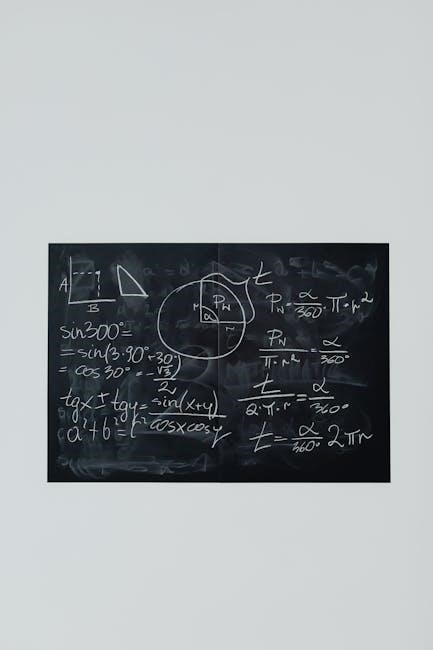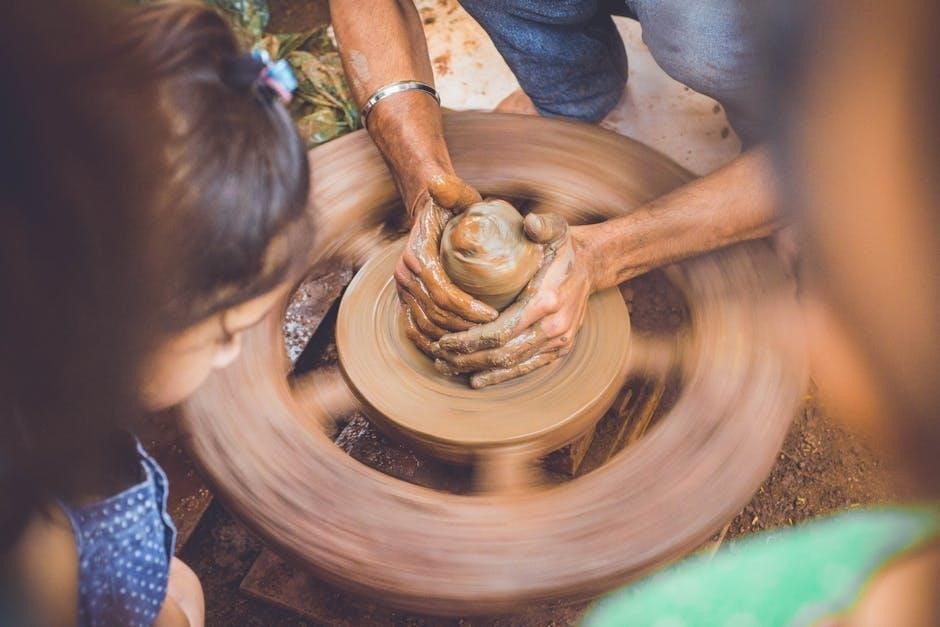
tools and equipment safely always.
Overview of the Rear Wheel Assembly Components
The rear wheel assembly of a Harley-Davidson motorcycle consists of several key components, including the rim, hub, spokes, brake rotor, sprocket, and tire. These components work together to provide a safe and reliable riding experience. The rim is the outer part of the wheel, while the hub is the central part that connects to the axle. The spokes connect the rim to the hub, providing additional support and stability. The brake rotor is a critical component of the braking system, and the sprocket is used to transmit power from the engine to the rear wheel. The tire is the outermost component, providing traction and cushioning on various road surfaces. Understanding these components is essential for proper assembly and maintenance of the rear wheel. Using the correct tools and equipment is also crucial for a successful assembly process.
Importance of Following the Manufacturer’s Instructions
Following the manufacturer’s instructions is crucial when assembling the rear wheel of a Harley-Davidson motorcycle. The instructions provide step-by-step guidance on the assembly process, ensuring that all components are properly installed and secured. Failure to follow the instructions can result in incorrect assembly, leading to safety issues and potential damage to the motorcycle. The manufacturer’s instructions also provide important information on torque specifications, lubrication, and other critical details. By following the instructions, riders can ensure that their motorcycle is properly assembled and maintained, reducing the risk of accidents and ensuring a safe riding experience. Additionally, following the manufacturer’s instructions can also help to prevent voiding the warranty and can provide peace of mind for riders. Proper assembly is essential for optimal performance and safety.

Preparation for Rear Wheel Assembly
Preparation involves gathering tools and equipment, including
specific
materials and supplies always needed.
Removing the Existing Rear Wheel Assembly
Removing the existing rear wheel assembly is a crucial step, refer to the service manual for specific instructions and guidelines. The process involves saving the axle, axle nut, brake disc, sprocket, and wheel spacers for kit installation. It is essential to follow the manufacturer’s instructions to ensure a safe and successful removal. The rear brake caliper must be removed before removing or installing the wheel, and the cotter pin or spring clip for the axle nut must be replaced. This step requires attention to detail and careful handling of the components to avoid damage or injury. By following the correct procedures, you can ensure a smooth and efficient removal of the existing rear wheel assembly. Always consult the service manual for specific details and recommendations.
Cleaning the Wheel Surfaces
Cleaning the wheel surfaces is a critical step in the rear wheel assembly process, using Harley-Davidson Wheel and Tire Cleaner and a Harley Wheel and Spoke Brush. This ensures the removal of dirt, grime, and other contaminants that may interfere with the assembly process. The cleaner is specifically designed for use on Harley-Davidson wheels and tires, and the brush helps to reach into tight spaces and crevices. By cleaning the wheel surfaces, you can ensure a smooth and even installation of the new rear wheel assembly. It is essential to follow the manufacturer’s instructions for cleaning and preparation to ensure a successful assembly. The cleaning process helps to prevent damage to the components and ensures a safe and proper installation of the rear wheel assembly, which is crucial for the overall performance and safety of the motorcycle.

Key Considerations for Rear Wheel Assembly

Proper alignment and torque specifications are crucial for safe and successful rear wheel assembly using standard tools and equipment always and safely every time.
Removing the Rear Brake Caliper
To remove the rear brake caliper, start by loosening the caliper bolts using a wrench or socket, then carefully pull the caliper away from the rotor.
It is essential to take note of the brake hose and ABS sensor wiring to avoid damaging them during the removal process.
Use a piece of wire or a rubber band to suspend the caliper from the frame, taking care not to stretch or damage the brake hose.
Remove the caliper bolts and washers, and gently pull the caliper away from the rotor, taking note of the brake pads and any shims or spacers.
Refer to the service manual for specific instructions and precautions when removing the rear brake caliper from your Harley-Davidson motorcycle.
Always follow proper safety procedures when working with brakes to ensure safe and reliable operation of your vehicle.
Proper removal and reinstallation of the rear brake caliper are critical for maintaining the safety and performance of your motorcycle.
Ensuring Proper Alignment
Ensuring proper alignment is crucial when assembling the rear wheel of your Harley-Davidson motorcycle.
The wheel must be properly aligned with the brake rotor and sprocket to ensure safe and reliable operation.
Use a dial indicator or other precision measuring tool to check the alignment of the wheel and make any necessary adjustments.
Refer to the service manual for specific instructions and guidelines for ensuring proper alignment.
Proper alignment will help to prevent uneven wear on the tire and brake pads, and will also help to ensure that the motorcycle handles properly.
It is also important to check the alignment of the brake caliper and rotor to ensure that they are properly positioned and functioning correctly.
By following the proper procedures and guidelines, you can ensure that your Harley-Davidson motorcycle is properly aligned and ready for safe and reliable operation.

Final Checks and Adjustments
Performing final checks and adjustments ensures the rear wheel assembly is properly secured and functioning using
standard
procedures always safely.
Verifying Fitment and Checking the Brake System
To ensure proper function and safety, verifying fitment and checking the brake system is crucial. The rear wheel assembly must be compatible with the motorcycle’s make and model. Contact a Harley-Davidson dealer to verify fitment, as mismatching wheels and installation kits can cause loss of control. The brake system should also be inspected to ensure it is functioning properly. This includes checking the brake pads, rotors, and calipers for wear and damage. Any issues with the brake system should be addressed before the motorcycle is ridden. By verifying fitment and checking the brake system, riders can ensure their motorcycle is road-ready and safe to operate. This step is essential in the rear wheel assembly process and should not be overlooked. Proper verification and inspection can help prevent accidents and ensure a safe riding experience.
Checking Alignment and Adjustments
Checking alignment and adjustments is a critical step in the rear wheel assembly process. The wheel must be properly aligned with the motorcycle’s frame and swingarm to ensure proper tracking and handling. The axle nuts and wheel spacers should be checked to ensure they are properly tightened and aligned. Any misalignment can cause uneven tire wear, vibration, and poor handling. The motorcycle’s owner’s manual or service manual should be consulted for specific instructions on checking alignment and adjustments. A wheel alignment tool may be necessary to ensure accurate alignment. By checking alignment and adjustments, riders can ensure their motorcycle is handling properly and safely. This step requires patience and attention to detail to ensure a proper and safe ride. Proper alignment and adjustments can help prevent accidents and ensure a smooth riding experience.
Proper rear wheel assembly is crucial for safety and performance using
correct
procedures and tools always.
Importance of Proper Rear Wheel Assembly
The importance of proper rear wheel assembly cannot be overstated, as it directly affects the safety and performance of the motorcycle. A correctly assembled rear wheel ensures that the brake system functions properly, and the tire is securely in place. This, in turn, provides the rider with confidence and control while riding. The manufacturer’s instructions should be followed carefully to avoid any mistakes. Using the correct tools and procedures is also essential to prevent damage to the components. By taking the time to properly assemble the rear wheel, riders can enjoy a safe and enjoyable riding experience. The rear wheel assembly is a critical component of the motorcycle, and its proper assembly is vital for the overall well-being of the vehicle and its rider, using standard tools and equipment always for safety.